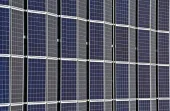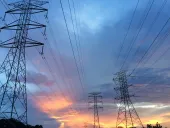Renewable Energy recipes III – tariffs for PV projects
By Agostinho Miguel GarciaContinuing my series on recipes for procedures to support Asia to develop PV capacity I am devoting this one to the tariffs. I mentioned on one of my earlier recipes that tariffs should be obtained from the market and FiT should be avoided or treated very carefully. I am now going to expand a bit on this issue. This recipe will require to consider 2 objectives:
1) Develop PV over a whole country
2) Develop PV at the lowest cost in a country
For recipe 1, a Fit or tenders for regions/districts/provinces (which ever may be the case) must be conducted.
A Fit will create inefficiencies at the level of project development with trading in licences and other intermediary deals, but it will also have a positive impact on GDP as local companies generate revenue and even create jobs riding the wave of developing licences and then sell them. India for example did not allow for trading of licences as they could not be exchanged, but land banks were nonetheless traded with some value added to local companies and land owners.
Unfortunately as it is the case with property development the local land owners are seldom aware of the real value of their land and obscure deals happen where gains are disproportionate to the buyers. If you choose the Fit please be sure to review them not yearly, but every 3 to 6 months and be very careful on the gestation of PV projects. Fit become very expensive by the time projects are commissioned, so short implementation windows are required based on provided tariffs.
The best example in Asia is Vietnam. The Fit should be reviewed soon as it will create an unnecessary burden for the state as prices continue to decrease and experience of deploying projects in the country increase and thus risk perception is lower.
Local tenders are much better and provide a whole country with a possibility to have solar deployed at the best cost for each region. I am taking the example of India where tariffs in different states and sites in the country are not being understood properly and every state wants to have the lowest tariffs, which are in Rajasthan at the moment.
This is due to several reasons and I would expect the readers to know the reason after my earlier recipes.Projects depend on several variables including the irradiation, the land cost and suitability, cost of equipment and installation as well as EPC costs, but moreover cost of capital.
The impact of the return of equity and the cost of the loan affect a project means respectively 9 to 7 times the impact of a similar variation in CAPEX. The top influencer however is the plant yield, with the load factor or unit factor affecting the tariff a whopping 30 times over a similar variation on CAPEX (1% change in capex, return on equity, loan cost and load factor were compared in terms of LCOE variation).
Thus be very clear that solar tariffs are not going to be the same over any country and much less from Tamil Nadu to Jammu and Kashmir in India or even to the Northeastern states. Having such expectation within the country and even from the neighbouring countries as Nepal or Bangladesh is not positive and will lead to tenders being cancelled and PPAs being expected at costs that are not even realistic.
Thus conduct tenders throughout the country and expect different tariffs, calculate them for the intended sites, hire consultants to provide guidance on realistic tariffs and go forward. Each country will have its own costs and locally those costs may also be different, so develop solar as much as possible, but realising that hydro rich regions are certainly not solar rich ones.
In the case 2, we are mostly looking at the low hanging fruits. Be aware that after a while there will no more of such “fruits”. You may need a ladder after that. So, go for national tenders and you will see projects being developed in the best locations. A recommendation is to define the grid substations or go for solar parks. The grid is finite and once the available capacities are reached, there is a tendency for projects to dry out.
Using solar parks, which are infrastructured places with planned evacuation lines and substations as well as integration/balancing into the grid, the cost of solar comes down from both the tariffs and also from the transmission and grid integration point of view. Countries like India and South Africa have experienced the chaos of having to lay down transmission lines for solar and even wind projects and how expensive that was.
In short case 1 is better than case 2. Fit versus local tenders for case 1 with a clear recommendation for the local tenders. Solar parks are always a good idea to attract foreign investment and thus lower the costs and can be developed for both cases.
The gestation time of solar parks can be long and it requires strong leadership and understanding from the authorities at all levels: central, state and district levels. Only with an adequate coordination it is possible to have solar parks develop timely and meaningfully.




















 Advertise
Advertise






